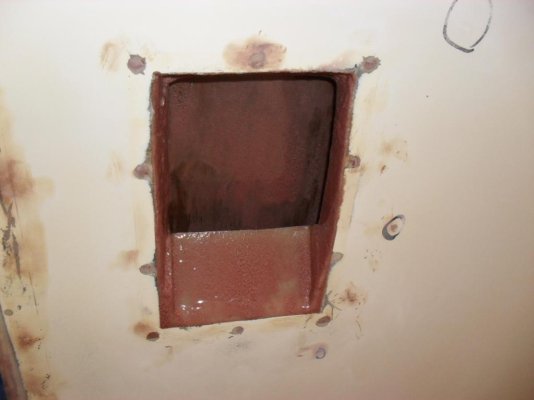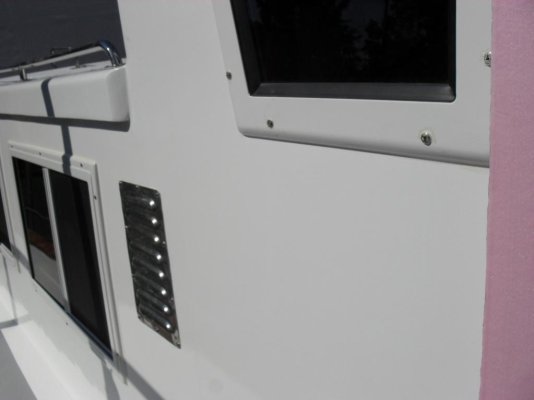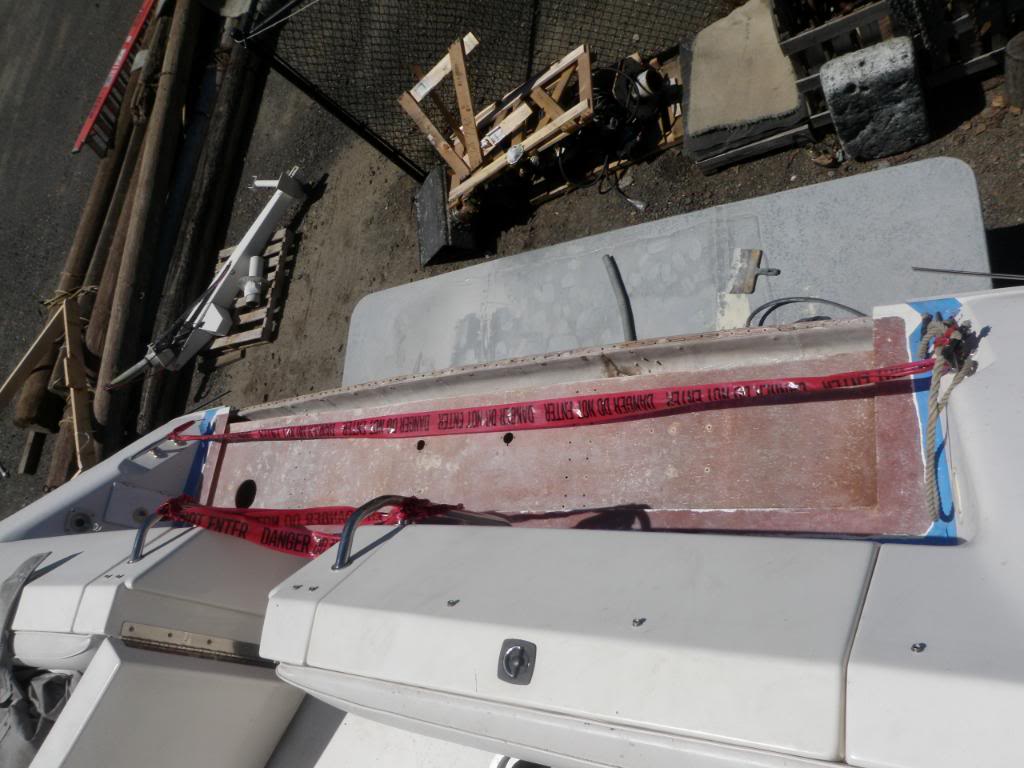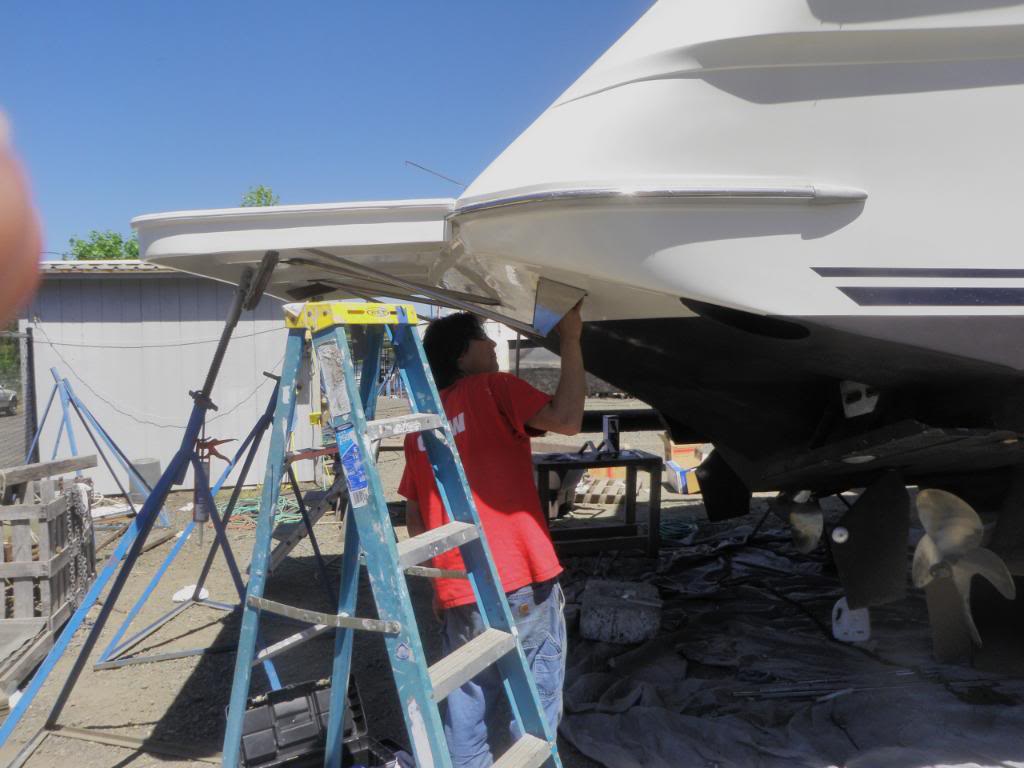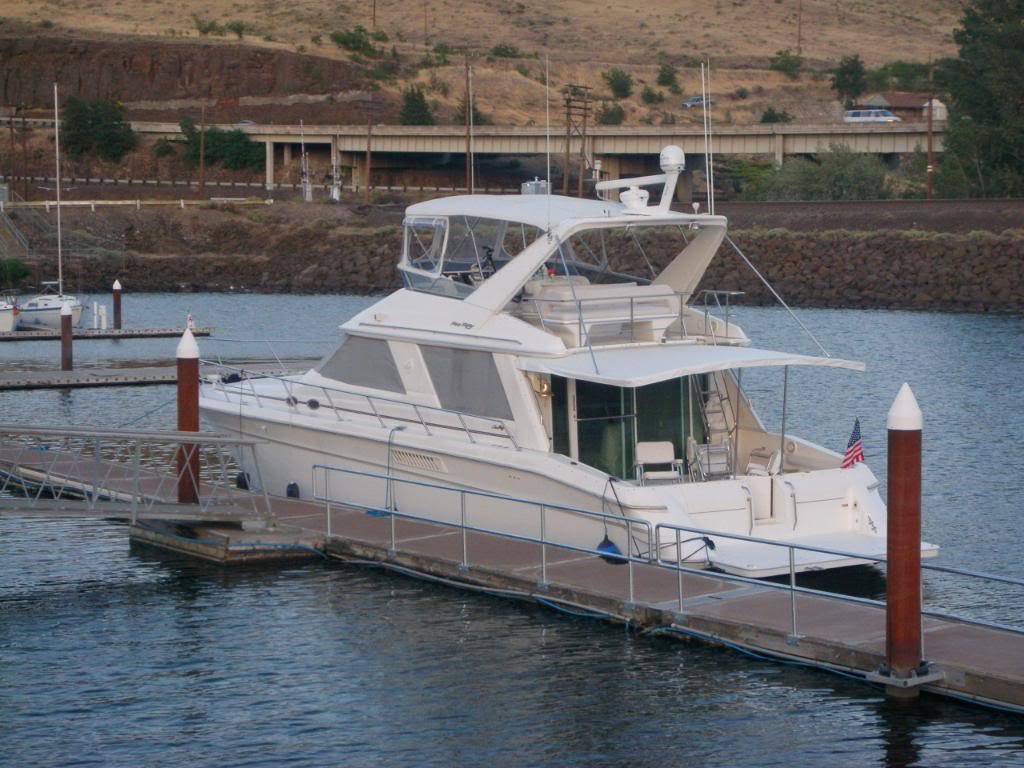Unlike many who fall in the "run, forest, run" camp I don't think what you're describing would make me run from that boat.
When I bought Beachcomber there were two areas of the boat that showed elevated moisture content. The first, on the port side above the shear line, was caused by what appeared to be the boat hitting a piling while docking. There was an 8" long area of the plastic that holds the rub rail that had been chipped and a piece on the underside was missing. This was near the stern and allowed moisture to get into the coring, likely from waves. The area with the high moisture was about 10" tall by 8' long and extended from the break in the plastic toward the stern.
The surveyor, knowing I was bringing the boat to a desert climate, said not to worry about the elevated moisture there. He suggested I repair the plastic area that was broken, then let the dry climate wick the moisture out through the gelcoat.
The second area was the swim platform. The PO had mounted a dinghy crane on the swim platform and failed to properly seal the holes in the platform. The entire platform was wet, wet, wet. We removed the crane, cut out the entire swim platform area and made a new swim platform to fit in there.
The first repair only cost a few bucks. The second one cost a couple thou but we ended up with a much larger swim platform. Here's a shot looking down at the stern after the old swim platform had been cut away. The red stripe near the stbd side of the swim platform is the channel where the new platform was fitted into.
Here's the boat yard crew working on sanding the platform prior to applying the first coats of paint.
Here's the crew mounting the platform onto the stern.
This isn't the best shot in the world, but it shows what it looks like....


